Brown sugar salmon is topped with Dijon mustard and brown sugar that caramelizes into a sticky sweet and savory glaze that will make your mouth water. You only need 4 ingredients!
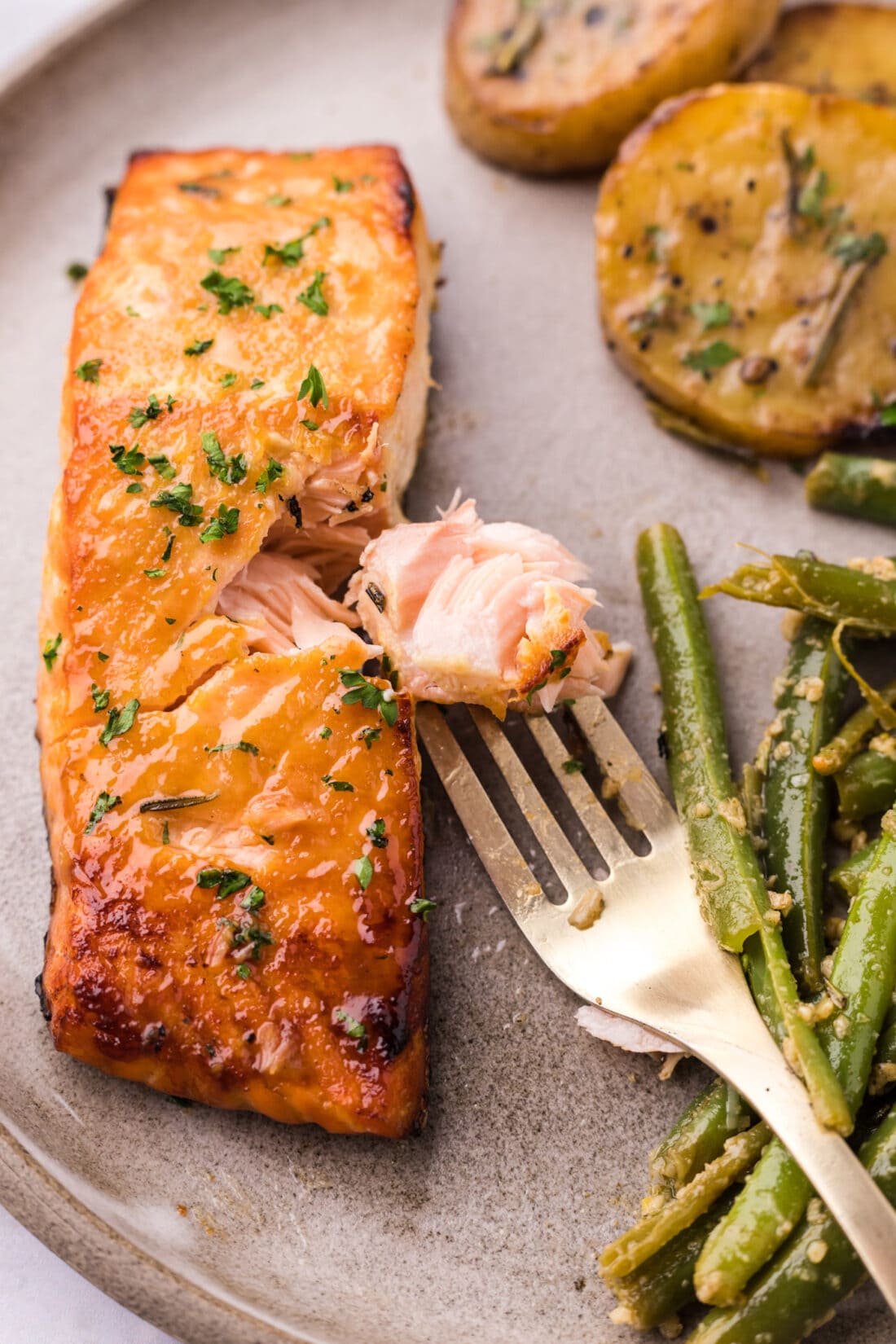
Why this recipe works
Salmon is the best neutral base for a world of different flavors. Everything from this sweet brown sugar salmon to dill salmon and Cajun salmon, we really can’t get enough of it. Salmon is rich in omega-3 fatty acids (vitamin B12) while being low in saturated fats. This fish begs for flavors to complement it and we aren’t shy about doing so!
Brown sugar salmon boasts a tangy sweet crust from both the dijon and brown sugar that caramelizes as it bakes. This one is a winner and really adds a gorgeous flavor to these flakey, juicy filets.
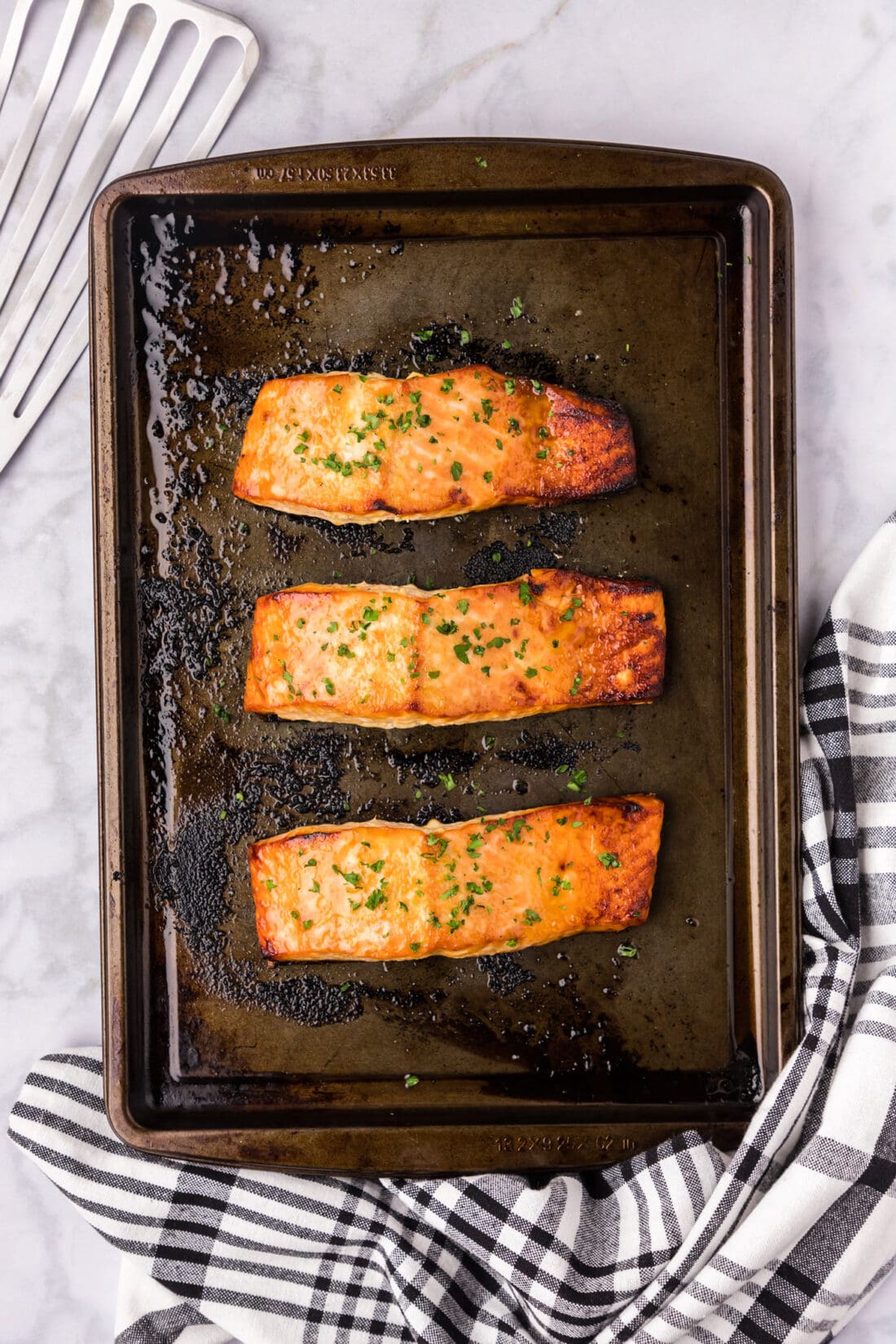
Ingredients you will need
Get all measurements, ingredients, and instructions in the printable version at the end of this post.
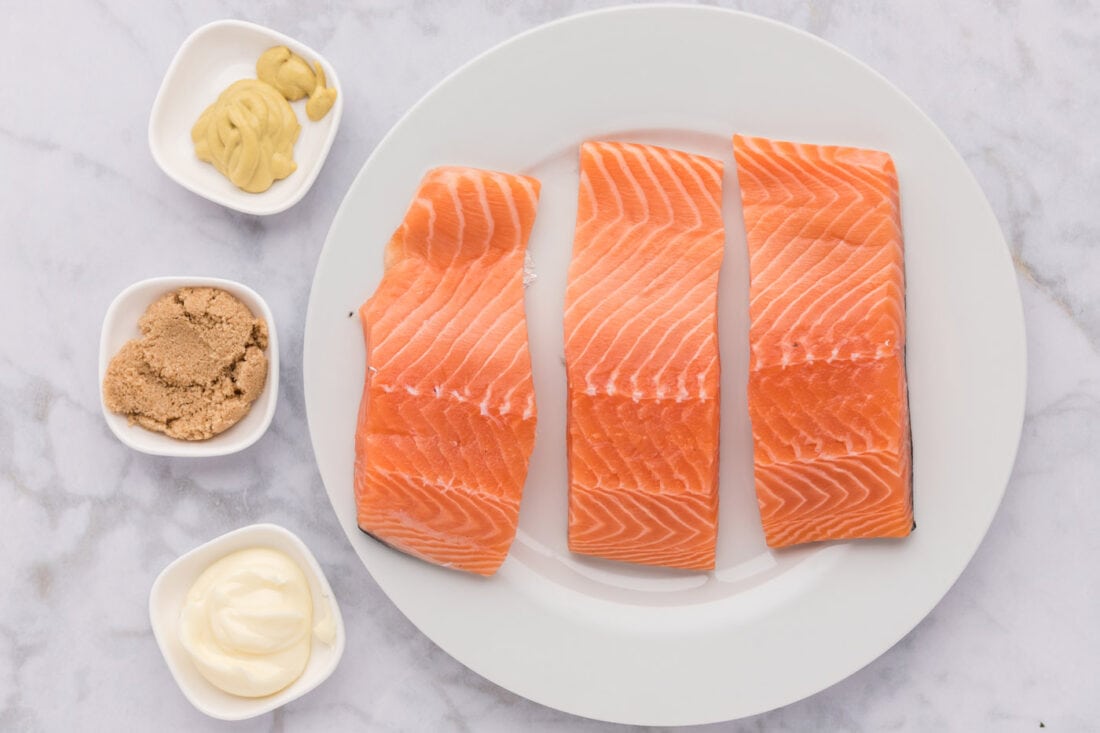
Ingredient Info and Substitution Suggestions
SALMON – Center cut salmon provides uniform thickness between your filets. Use a sharp chef’s knife to slice the filet into 3 smaller filets. We highly recommend using fresh salmon over frozen. If you do have frozen salmon, allow it to fully thaw overnight in the refrigerator before using. Always cook fish with the skin side down. If you place the fish skin side up, the fish will cook and begin to flake, making it fall apart as you lift it.
How to Make Brown Sugar Salmon
These step by step photos and instructions are here to help you visualize how to make this recipe. You can Jump to Recipe to get the printable version of this recipe, complete with measurements and instructions at the bottom.
- Preheat oven to 400 F.
- Combine brown sugar, dijon mustard, and butter in a small bowl. Stir together until incorporated.
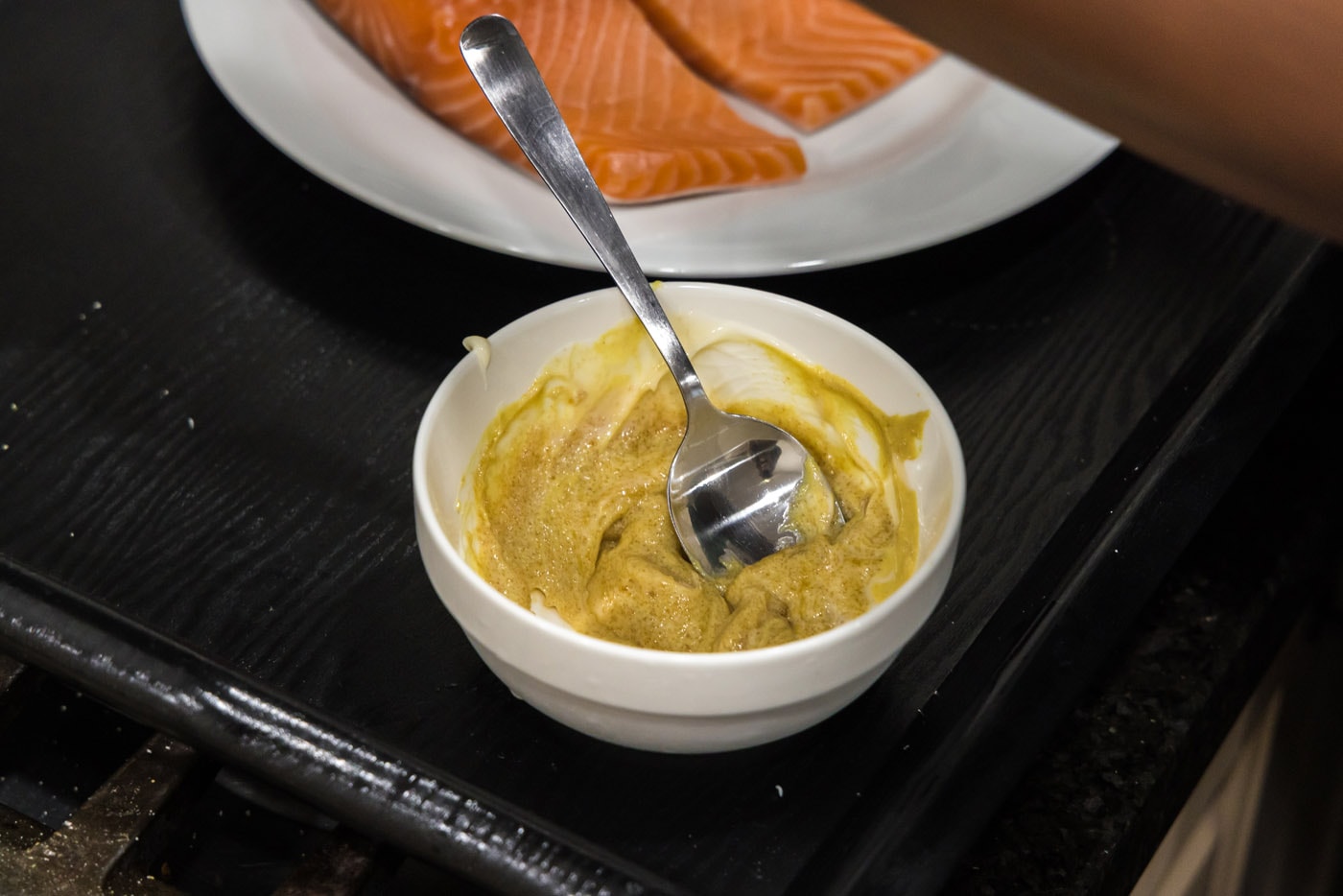
- Spread mustard mixture over the flesh of each salmon filet.

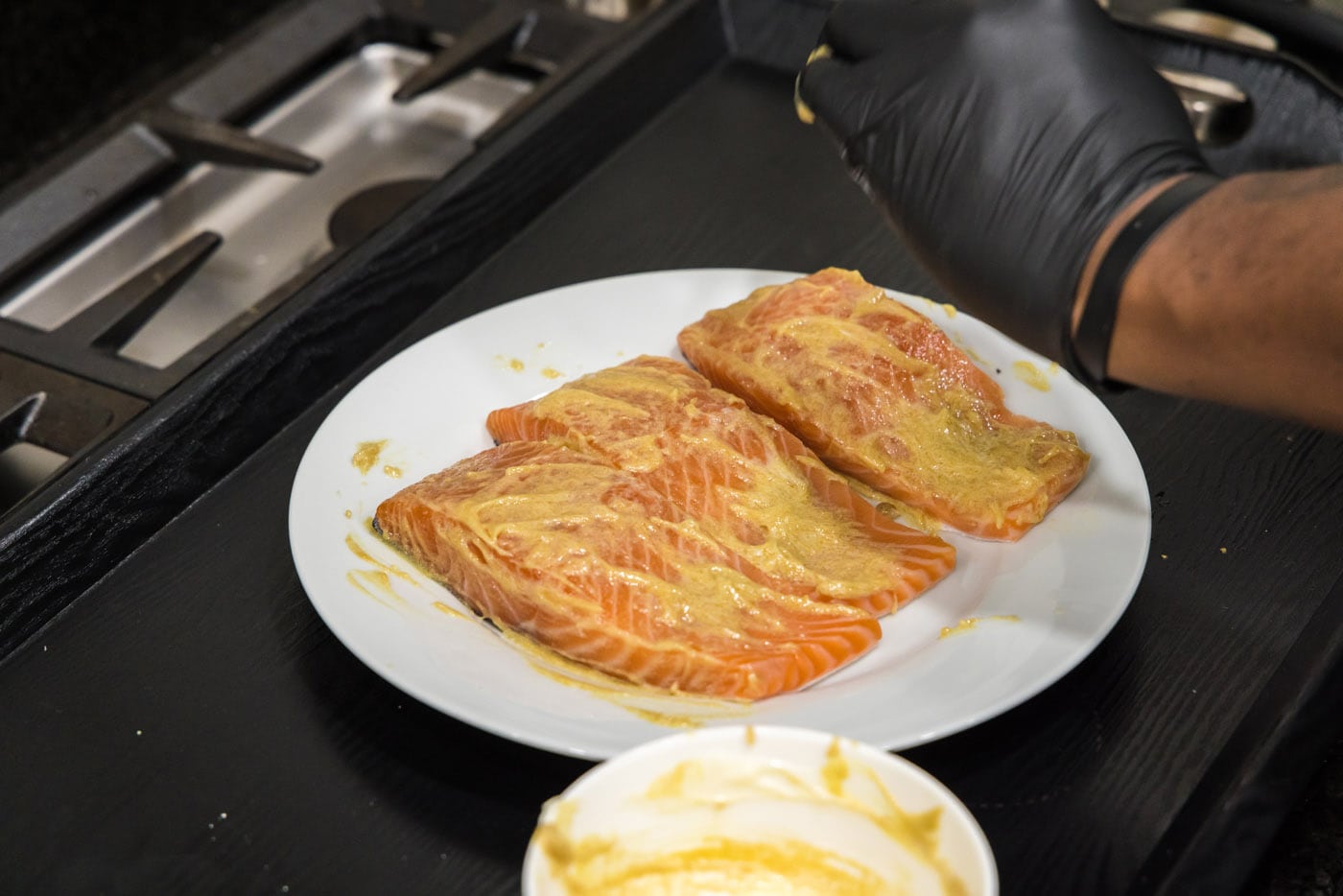
- Place filets skin side down on a baking sheet and bake for 25 minutes.
EXPERT TIP – You can line your baking sheet with parchment paper if you want less cleanup. However, we don’t recommend foil as the sugary coating drips off and may make the skin of the fish stick. If you use foil, be sure to spray it with non-stick cooking spray.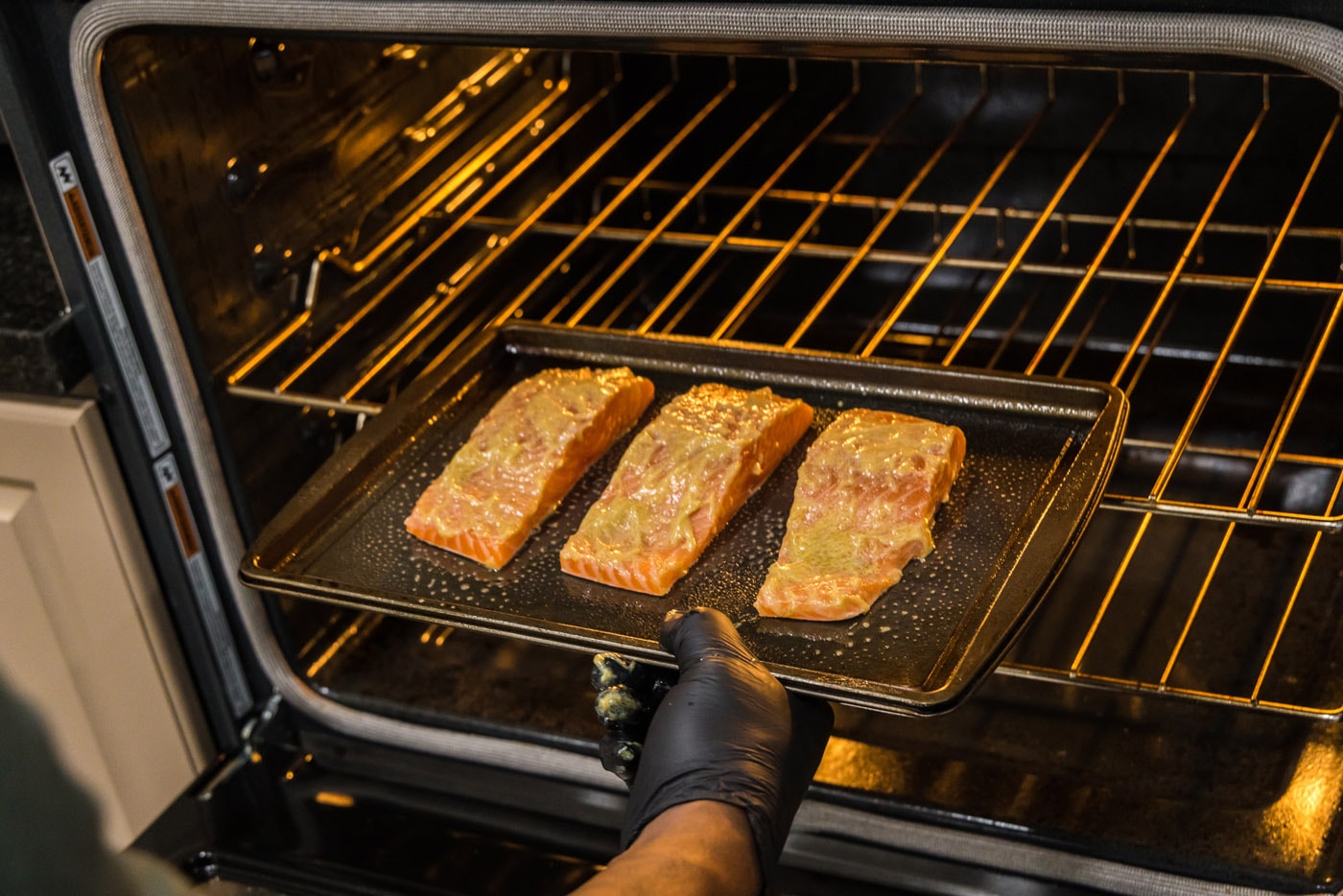
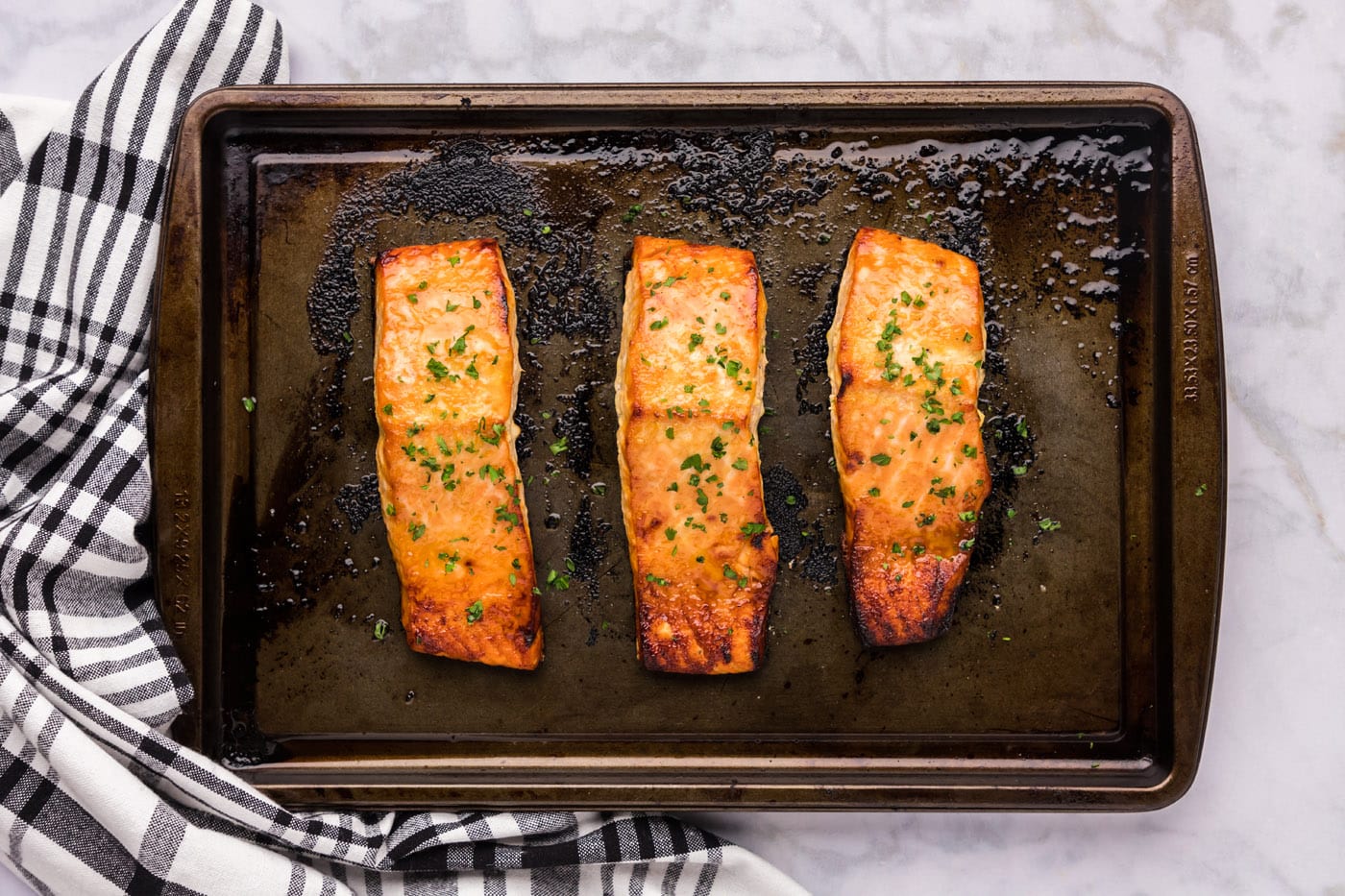
Frequently Asked Questions & Expert Tips
To test for doneness, gently press your finger (or the tip of a knife if it’s too hot) onto the top center or thickest part of the salmon – if it begins to flake or separate then it is done cooking. If you overcook the salmon, it will be dry and overly flaky.
Store leftovers in an air-tight container kept in the refrigerator for 2-3 days. Reheat in the oven set to 275F on a foil-lined baking sheet for 10 minutes or until warmed through.

Serving Suggestions
Serve brown sugar salmon with sides such as rice, garlic roasted potatoes, green beans, broccoli, parmesan potatoes, or a tossed dinner salad.
Want to add a dash of heat? Try sprinkling on some red pepper flakes. Enjoy warm from the oven.
More Salmon Recipes
I love to bake and cook and share my kitchen experience with all of you! Remembering to come back each day can be tough, that’s why I offer a convenient newsletter every time a new recipe posts. Simply subscribe and start receiving your free daily recipes!
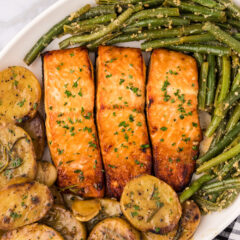
Brown Sugar Salmon
IMPORTANT – There are often Frequently Asked Questions within the blog post that you may find helpful. Simply scroll back up to read them!
Print It Rate ItIngredients
- 2 ½ Tablespoons brown sugar
- 1 Tablespoon Dijon mustard
- 2 ½ Tablespoons butter should be very soft, like pudding
- 1 pound center cut salmon cut into 3 filets
Things You’ll Need
Before You Begin
- Center cut salmon provides uniform thickness between your filets. Use a sharp chef’s knife to slice the filet into 3 smaller filets. We highly recommend using fresh salmon over frozen. If you do have frozen salmon, allow it to fully thaw overnight in the refrigerator before using. Always cook fish with the skin side down. If you place the fish skin side up, the fish will cook and begin to flake, making it fall apart as you lift it.
- To test for doneness, gently press your finger (or the tip of a knife if it’s too hot) onto the top center or thickest part of the salmon – if it begins to flake or separate then it is done cooking. If you overcook the salmon, it will be dry and overly flaky.
- Store leftovers in an air-tight container kept in the refrigerator for 2-3 days. Reheat in the oven set to 275F on a foil-lined baking sheet for 10 minutes or until warmed through.
Instructions
- Preheat oven to 400 F.
- Combine brown sugar, dijon mustard, and butter in a small bowl. Stir together until incorporated.
- Spread mustard mixture over the flesh of each salmon filet.
- Place filets on baking sheet and bake for 25 minutes.TIP – You can line your baking sheet with parchment paper if you want less clean up. However, we don’t recommend foil as the sugary coating drips off and may make the skin of the fish stick. If you use foil, be sure to spray it with non-stick cooking spray.
Nutrition
Chef Antoine Davis
Latest posts by Chef Antoine Davis (see all)
- Vegetable Lo Mein - January 16, 2025
- Korean Fried Rice - January 14, 2025
- Creamy Salmon - January 7, 2025
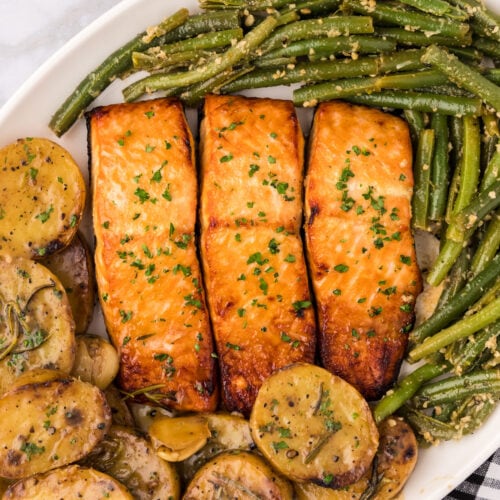
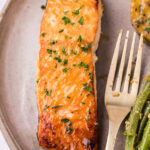

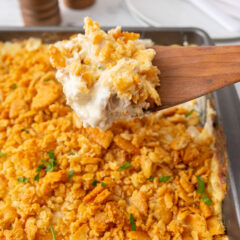
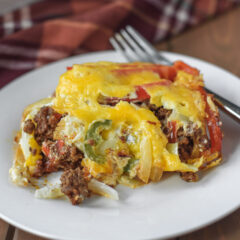
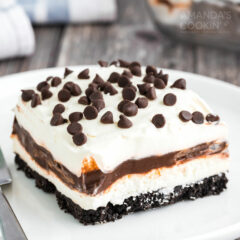

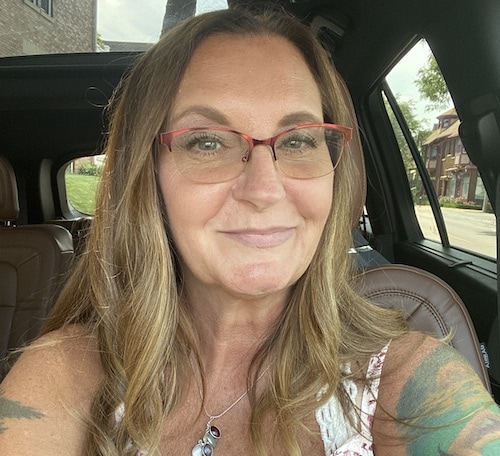


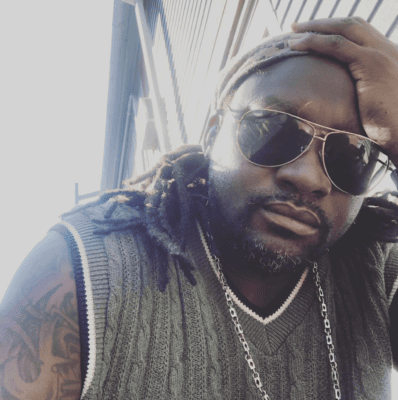

Leave a Reply